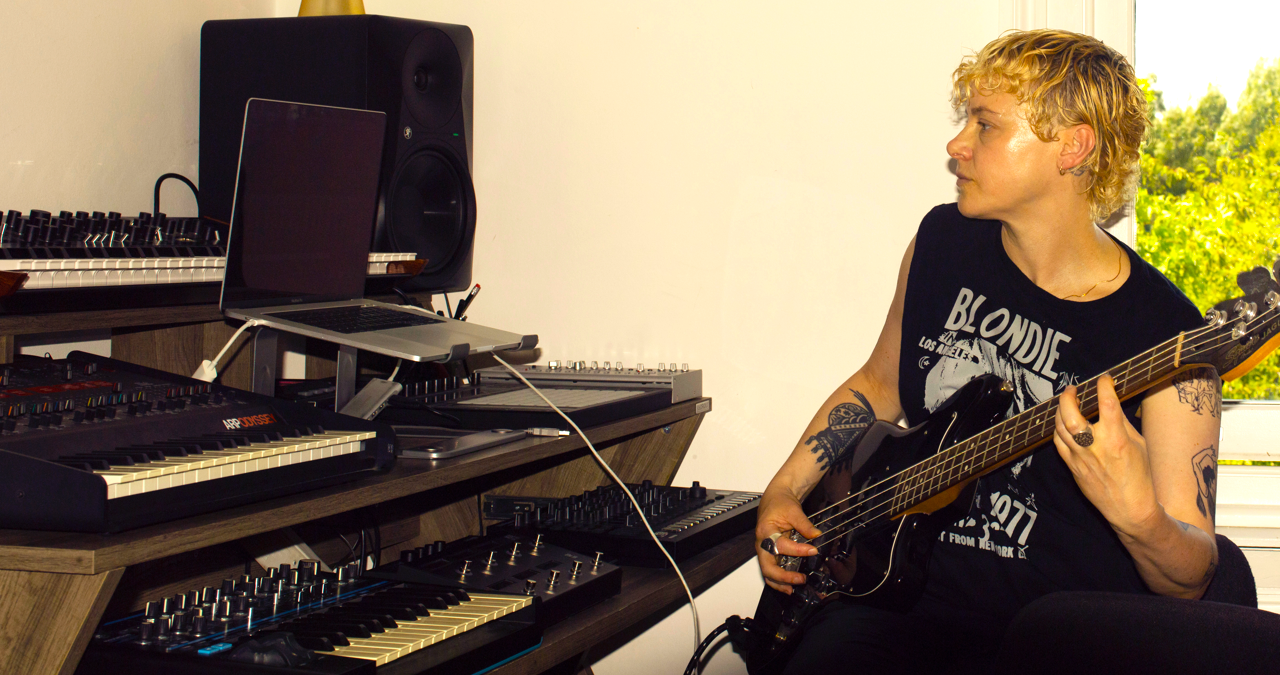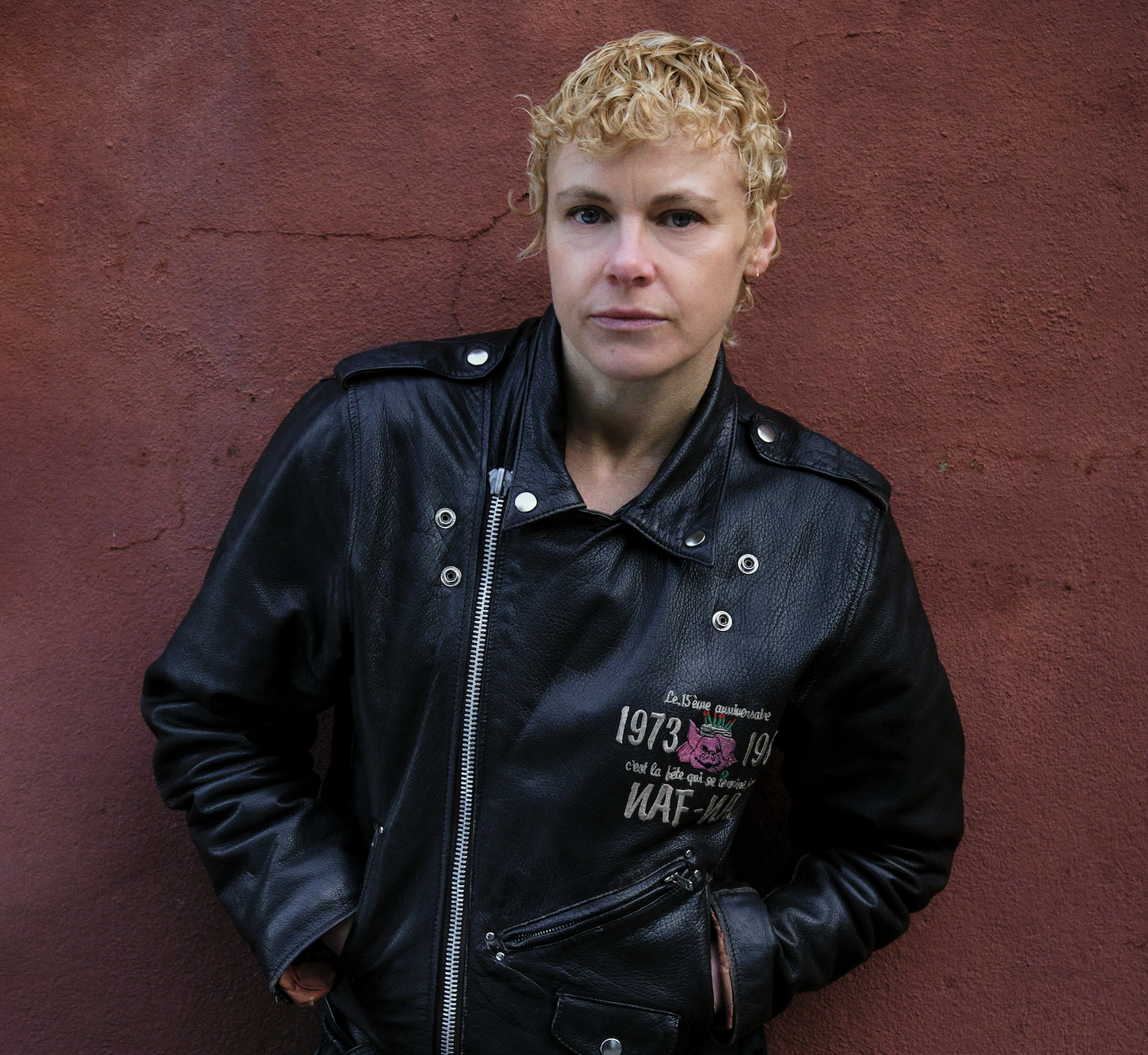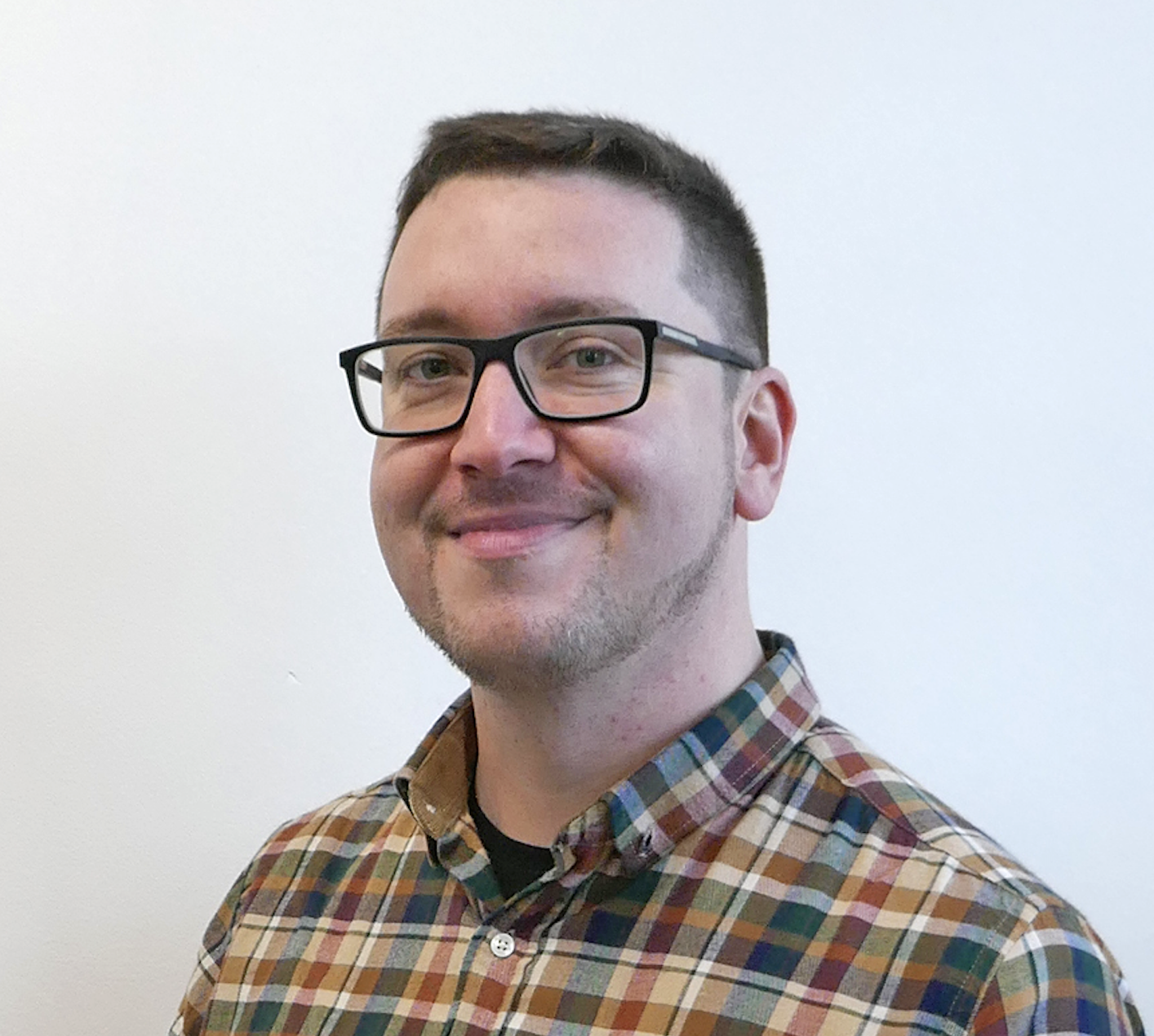"It takes time to learn how to DJ in a club and how to work - how to read a dance floor is a real skill": DJ and label boss Hannah Holland on improving music production, and the similarities between DJing and soundtracking
The DJ, producer and composer speaks about her essential tools and the making of the visceral The Visitor soundtrack

After first exploding onto the London DJ scene in the early 2000s, Hannah Holland has become a mainstay of the queer and alternative club world. Since she founded Batty Bass Records in 2008, her career has spanned the writing of a plethora of soundtracks (including Adult Material and Electrician) as well as a wide array of collaborative material. In 2021, she released her debut studio album - Tectonic - to a flurry of acclaim.
On the heels of her recent pulse-pounding score for the Bruce LaBruce film The Visitor, we caught up with Hannah to learn more about her creative process and to enquire about some of her go-to tools for unlocking her sonic creativity.
MusicRadar: Hi Hannah, first can we ask you about your recent soundtrack to the film The Visitor - it’s an extraordinary listen, full of rippling, kinetic sounds and diverse instrumentation. How did this project first come about?
Hannah Holland: “It came about through a friend, Kurtis Lincoln, who I'd been making some music with. He had just shot some of the film as he was in it, I was in the studio with him and he started telling me about working with Bruce LaBruce (the film’s director) who is an absolute queer icon.
“I knew about Bruce LaBruce from the 90s when I was a teenager watching his famous Hustler White film. He’s this kind of legendary figure. So, it was really amazing that my friend was in his film. Then, soon after he told me the production team were looking for a London-based composer, so I went forward for it.
"I’d previously met Bruce through a theatre project a few years ago, and we were sort of aware of each other. One thing led to another, we had a meeting. I did a demo for him, and it just kind of all sunk up very nicely.”
MR: How long did you spend making the soundtrack. Were you able to compose to picture?
Want all the hottest music and gear news, reviews, deals, features and more, direct to your inbox? Sign up here.
HH: "They sent me a rough cut of the film - It’s essentially a re-make of Pier Paolo Pasolini’s Theorem, which - weirdly - I had seen two or three days before we had got in contact. It’s a cult Italian film from the 60s starring Terence Stamp. Ennio Morricone did the soundtrack, quite a discordant, weird, avant garde soundtrack - very edgy and uncomfortable.
"We talked about something riffing on a main theme for The Visitor that [referenced] that original soundtrack. Bruce's work is porn, so the sex scenes were going to be cut to techno. Then, the rest of it was going to be this kind of avant-garde electronica, sort of soundscapes.
"I made a piece of music for them and sent it. And, yeah, they loved it. So that's kind of how it started. We used that piece as a main theme, and then I did different versions of that for different scenes.
"I gave them a lot of my work, so they cut to a lot of my techno and dance-floor tracks which which seemed to work with the the spirit of the film. During that process, we kind of came up with a [sonic] palette,
"I had just bought an ARP Odyssey before I started working on this - that was absolutely perfect for the soundtrack. I put loads of MIDI through that, and it's such an unpredictable machine that it came up with some really sort of gnarly sounds, and then I married that with strings.”
MR: The track The Screamer is such an invigorating listen - and the low end is really deep and kinetic. And how did that one start, and what did you use to give that track that energy?
HH: "That track already existed, actually. I'd given them a lot of my work which had never been released. The Screamer has been something that I made with Jonjo Jury about ten years ago. It never got released. We [both] love it, but it never seemed to sit anywhere. But, when this project came up, it just was the perfect kind of track for what they wanted.
"The driving bass part is my bass guitar - and a lot of cow bell! I had a Roland SH- 101 back when I had a studio in Hackney Wick and we had a really fun time, just like making a lot of mental sounds through that."

MR: Did you have to augment your older tracks to make them fit the film?
HH: "For the actual scenes that they used them in, they wanted the music to be very like upfront. It's almost a music video-type scenario, whereas when the rest of the film is going on, the soundtrack is more melded into the the dialog and the atmosphere of the film.
"Some of it was very new. The track She’s Giving Cray came out this year, and that was sat amongst music that's been around for the last ten years. It’s brilliant to be able to bring them onto a soundtrack, because I think a lot of my stuff has got a kind of cinematic edge to it.”
MR: What pieces on the soundtrack would you say your most proud of?
HH: "I did a cool collaboration with Roy Inc, called Animal. We actually did that one quite recently, and that was another one where we weren't quite sure where it was going to sit. But considering Roy’s history in queer culture, having him involved with Bruce's film worked so well. Everything worked incredibly well with the film. That was a really fun collaboration to do.
“I guess [the soundscapes] are sort of something that's relatively new to me, in a way. I mean, I've done maybe, like four or five big projects using this kind of abstract, kind of soundscape work. I just absolutely love it. I find it really fun to do."
MR: What are some of your primary tools for exploring sounds and is it mainly hardware or software you use these days?
HH: "It’s a mixture. I love the ARP Odyssey, that’s really fun to use. I love putting my bass guitar through effects pedals. I use the Korg Prologue quite a lot as hardware. I always go back to Kaoss pads. There's quite a lot of Kaoss Pad on The Visitor soundtrack.
“I absolutely love playing around in Ableton and just finding obscure effects and sound design plugins. I love Guitar Rig - the effects on that are brilliant, the animated effects [in particular] are so good.
Putting the ARP Odyssey through Guitar Rig just throws up really interesting sounds and very kind of like atmospheric sounds. Cabelguys ShaperBox is really fun.
What was really useful on this soundtrack was this plugin called Swirl by Kentaro. I'm not even sure how I found that, but it was just some guy that sells plugins - it’s not sort of a big brand or whatever.
“I absolutely love rinsing the BBC Sound Effects Archive for things like church bells and choirs and things like that, which was used a lot in the soundtrack. It’s such a brilliant library, and it's all royalty-free stuff that you can use. Anything you can think of has been recorded in that archive. I love taking that and then sampling it and using and putting it through sound design programs and, yeah, pissing about basically.”
MR: Do you use Ableton Live as your main DAW?
HH: "Everything's organised in there. It’s really good for me - for cutting and scoring to picture as well, because it has the it has quite a nice video [integration[ to it as well.
"I just find it very, very creative, like how you can just drag things in from other projects, really easily, and re-sample stuff. It’s good to think of it as like a an instrument in itself. I just love Ableton. I think it's brilliant."
MR: Your career started back in the 2000s, in those days, virtual DAWs weren't really as prominent as they are now. How did you get into software-based music making? Was that a kind of gradual process, or did you kind of leap on it as soon as it arose?
HH: "My friend had the first version of Ableton. That must have been maybe 1999 or something. It was a long, long time ago. I remember my friend (who actually got me into DJing as well) had it.
"I just loved how you could throw things together, it's such a great program to just use when you have no knowledge of anything, it’s very intuitive. I started playing around with it then.
"I was also in a band as a teenager in the '90s, and we were always trying to record stuff at home using Logic. So I had a bit of knowledge of just recording stuff [into] Logic. But, yeah, I had Ableton since the first number of version one.”
MR: How different is creating music for a soundtrack versus making a track for your own artistic projects?
HH: "I feel like when I'm doing soundtrack stuff, and there's a similar kind of feel to when I'm DJing - in a way - because you're very much responding to the atmosphere of the scene. It's very similar to when I'm DJing, and I'm kind of like feeling what the room needs, and which way to go with the DJ set.
"Usually, when I’m making a soundtrack, the director will have a strong reference point of what they want the music to sound like and what direction they want the music to go in. But, they're hiring me for the certain style that I do. Then I'll go away, and I'll kind of come up with lots of references, like lots of different artists.
I'll make a Spotify playlist of around 50 tracks that I feel fits the vibe. Then I'll start creating demos and start riffing - inspired by that playlist. It kind of organically grows from there, because I'll be then sending the director demos, and I'll start feeding them into the edit and seeing what works.”
MR: So how do you know when something is done? Do you sometimes have to just step away from a piece and say ‘that's it’?
HH: "Yeah, obviously we can fiddle around with pieces of music forever, but I think there's an instinctual skill for just being able to just go like ‘that is actually finished’ - I think it's just instinct, basically,
"I'm quite confident when it comes to choosing music, I’m very sure about what sounds right for some reason. It’s sort of like, when you’ve finished painting, and there's something about it that you just know."

MR: A few years back, you released your debut solo album Tectonic. How was the process of making that album, and what did you learn from that experience?
HH: "It felt very expansive being able to make that. It was the first time that I was given room to create an album, because I'd started doing soundtrack stuff, I wanted to really marry my electronic world, with the soundtrack world.
"It was really interesting process, it was interesting to take my arrangements to Big Jelly Studios and put them through loads of amazing vintage machines. That was a real learning process as well. It was also great to bring in musicians, because I've been working with a band called Black Gold Buffalo, so I really love working alongside live musicians.
"That was another opportunity to bring in Raven Bush on on violin, and Francesca Ter-Berg on on cello as well. They improvise their parts with my guidance - I really love that kind of magic of working with other musicians and seeing what is created."
MR: What advice would you give to anyone looking to have a kind of career like yours in this day and age?
HH: "I think you have to be as authentic as possible, really. When I first started DJing, it was a lot of graft - playing a lot of really low-key gigs and house parties anywhere that would have me DJ and just doing a lot. I think really honing your craft, honing your skills, and not expecting things to happen, you know, straight away - but that can happen very quickly these days.
"It takes time to learn how to DJ in a club and how to work - how to read a dance floor, that's a real skill. I think it’s really important to take the time to learn how to do that and just do it as much as possible."
"With production, I think it took so long to make it sound good, you know, and it's always a work in progress. I'm hardly ever satisfied with anything that I do, you're just striving to get better and everything that you make doesn't sound like how you want it, but It's endurance, it's patience.
"You want to be able to explore your sound, and, you know, do something that's authentic and just learn how to to create. You’ve got to really see production like it’s exercise - you’ve got to really exercise the muscle to keep yourself fit. When I'm on Ableton, it's like muscle memory. Even if I just do like, 20 minutes or half an hour a day, it's honing that muscle memory."
To listen and buy Hannah Holland's music and her soundtrack for The Visitor, head over to her Bandcamp page



I'm Andy, the Music-Making Ed here at MusicRadar. My work explores both the inner-workings of how music is made, and frequently digs into the history and development of popular music.
Previously the editor of Computer Music, my career has included editing MusicTech magazine and website and writing about music-making and listening for titles such as NME, Classic Pop, Audio Media International, Guitar.com and Uncut.
When I'm not writing about music, I'm making it. I release tracks under the name ALP.

